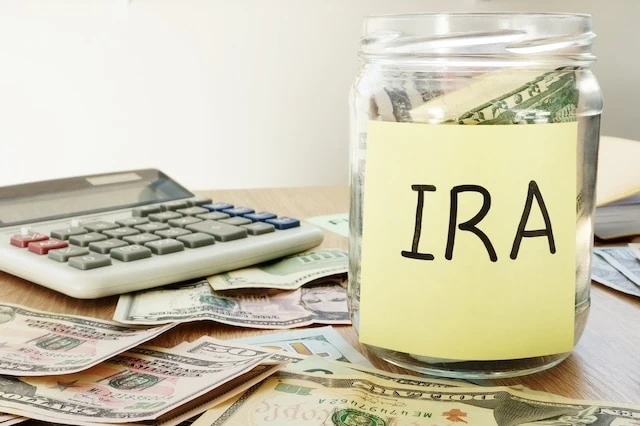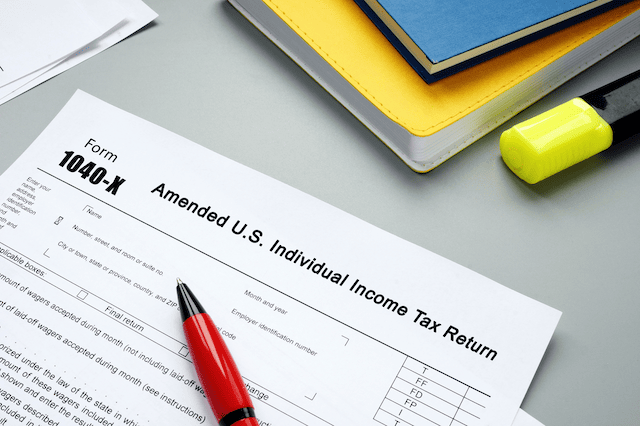An individual retirement account (IRA) is one of the best tools Americans have to save for retirement. But much like how there are best practices for using a hammer or screwdriver, there are best practices for investing in an IRA—and while straying from those best practices won’t land you a couple of bruised fingers, it will hinder your saving goals.
401(k)s remain the workhorse of the retirement saver. They have much higher contribution limits, they’re tax-deferred, and they’re mindless—contributions are pulled straight from your paycheck.
But there’s lots to love about the IRA. While IRA contribution limits are lower than 401(k)s, these accounts deliver the same tax advantages as a 401(k) while providing more flexibility and vastly more investment options. Plus, unlike a 401(k), an IRA isn’t tethered to your workplace—if you leave your job, you don’t have to deal with rolling over your account.
All you have to do is make sure you’re using your IRA the right way.
Today, I want to talk about a few common mistakes to avoid when it comes to investing in your IRA. Some of these errors can make more meaningful dents than others, but all of them will prevent you from maximizing the earning potential of your hard-earned money.
Table of Contents
What NOT to Do With Your IRA

The following are a group of mistakes—some basic, some tactical—that can hamper your IRA returns. A few of them are seemingly inherent, but others involve aspects of the IRA that most people don’t even think about.
Here they are, in no particular order.
1. Choosing the “Wrong” IRA Account

While there are actually several different types of IRAs, for this “problem,” we’re focusing on the two most popular: traditional IRAs and Roth IRAs. Both of these accounts are tax-advantaged, but in polar opposite ways, so you have to carefully consider your financial situation to determine which one is best for you.
First, you need to consider whether you qualify to contribute to either type of account. You or your spouse must have earned income to contribute to a traditional IRA. However, to contribute to a Roth IRA, you or your spouse must have earned income—and that income can’t be higher than a specified cap that’s set each year.
For instance, in 2024, single filers with modified adjusted gross income under $138,000 can contribute fully to a Roth IRA, up to the annual cap ($7,000 under age 50, $8,000 age 50 or older). The contribution cap is gradually winnowed down once MAGI reaches or exceeds $138,000, up until $153,000, at which point, they can’t contribute anything for the year.
Young and the Invested Tip: Are you a high-income earner who wants to contribute to a Roth IRA? You may still be able to via a Roth conversion, which is also called a “backdoor” Roth IRA. This isn’t a product, but rather a strategy in which you contribute money to a traditional IRA and then roll the funds over into a Roth IRA, or convert an entire traditional IRA or 401(k) into a Roth IRA. But note that you’ll have to pay income taxes on the funds, and you’ll also need to pay taxes on any earnings from your IRA contributions between when you contributed and when you converted the account.
Past that, the biggest consideration is which account will deliver the most tax benefit.
Traditional IRAs are tax-deferred. You contribute “pre-tax” money, and that money grows tax-free inside of the IRA. The only time tax is collected is when you withdraw, which you can do without penalty at age 59½. So the ideal situation for contributing to a traditional IRA is any point in your life when you’re in a tax bracket you believe is higher than the tax bracket you’ll be in during retirement. Put differently: It’s best to contribute to a traditional IRA in your peak earning years.
Roth IRAs are essentially the reverse. You can only contribute money that has already been taxed. The money is allowed to grow tax-free inside of the account, however, and you pay no taxes on those funds when you withdraw them in retirement. It’s best to contribute to a Roth IRA when you’re in a tax bracket you believe is lower than the tax bracket you’ll be in during retirement. Put differently: Contribute to a Roth IRA in years where you’re not earning very much—say, your college years.
Related: 5 Best Fidelity Retirement Funds [Low-Cost + Long-Term]
2. Contributing Too Much or Too Little

You can think of IRA contribution limits a little like bidding on The Price Is Right. You want to contribute as much as possible without going over the annual limit. (But unlike The Price Is Right, a $1 bid is a losing proposition.)
The logic here is really straightforward. If you contribute too little to your IRA, you’ll fail to maximize the tax-advantaged growth the account provides. And if you contribute too much … well, you’re breaking the rules. If you exceed the annual contribution limit in an IRA, you’ll pay a 6% tax penalty on any excess contributions every year until the excess funds are removed.
Fortunately, unlike The Price is Right, you don’t have to guess the annual contribution limits.
As mentioned before, the 2024 annual contribution limit for anyone under age 50 is $7,000. Anyone age 50 and older can contribute an additional $1,000 in “catch-up contributions,” for a total $8,000.
If you’re contributing to both a traditional IRA and a Roth IRA in the same year, the contribution limit is a joint limit that applies to both. In other words, let’s say you’re age 40 and you’ve contributed $3,000 to a traditional IRA in 2024. The most you could add to your Roth IRA is $4,000.
And remember: Roth IRA MAGI limits apply.
In addition to the federal limits, there is another limitation for some people. You cannot contribute a higher dollar amount to an IRA than you earned that year. For instance, if your 2024 income was $5,000, that would be the maximum you could add to IRAs that year. (And if you personally have no income and are contributing to a spousal IRA, how much you contribute would be determined by your spouse’s earnings.)
Related: How Much Should I Contribute to My 401(k)?
3. Not Budgeting for IRA Contributions

IRA contribution windows are extremely generous. You can make an IRA contribution as early as the first of the year, and you can do so for a given calendar year until the next year’s tax filing deadline. For example, you could have made 2023 contributions to your IRA between Jan. 1, 2023, and April 15, 2024.
You are allowed to contribute everything in one lump sum or make periodic contributions throughout the year. There are arguments for both.
If you contribute the full amount at the beginning of the year, your money will be invested for longer (which could result in bigger gains), and you won’t need to think about contributing for the rest of the year.
However, if you contribute the full amount by spreading it across equal payments throughout the year (and immediately invest it), you’ll be “dollar-cost averaging.” While your money won’t be invested all at once, it has the benefit of ensuring that you buy more shares when they’re cheap and fewer when they’re expensive. (A very coarse example: You invest $1,000 in new cash every six months. Today, Company A is $10 per share. You buy 100 shares. In six months, Company A is $7.50 per share; you buy 133 shares. In six more months, Company A is $12.50 per share; you buy 80 shares.)
Both methods have their advantages. What’s important is that you budget for your retirement contributions, no matter the method. The last thing you want to do is wait until you’re close to the contribution deadline, only to realize you can’t contributed as much as intended because that money was spent elsewhere.
Related: 9 Monthly Dividend Stocks for Frequent, Regular Income
4. Missing Spousal IRA Contributions

While a person typically can’t contribute to an IRA without earned income, there is an exception: having a spouse. If your spouse has earned income, you can invest in a spousal IRA. This exception allows each spouse to contribute up to the annual maximum amount as long as they file taxes jointly and just one of the two earns an income.
Spousal IRAs can be traditional or Roth accounts. And the “individual” part of “individual retirement account” still stands; these aren’t joint accounts. Contribution limits are also the same as they are for other IRAs.
This is an extremely beneficial loophole that allows a spouse to continue making tax-advantaged retirement contributions while they stay home and care for their children, help an ailing relative, or simply go through a lapse in employment for any reason.
Related: Beginner’s Guide to Fidelity Target-Date Funds
5. Forgetting to Name Beneficiaries

When you open any type of retirement account, you’re primarily investing with the expectation that you’ll benefit from the funds once you call it a career. But sometimes, things don’t go according to plan—and should you pass away unexpectedly, your funds will go to your beneficiaries.
If you name them, that is.
A beneficiary is the person who receives the benefits of an IRA (and other accounts, from 401(k)s to life insurance policies) after the account owner or policyholder dies. Some retirement accounts require certain types of beneficiaries, such as a spouse or child, while others allow you to name any person.
But you want to add at least one beneficiary as soon as you open up an IRA or any other type of retirement account, and you want to make sure that beneficiary information is always current.
A person’s IRA isn’t considered part of their estate; a designated beneficiary receives the IRA benefits even if a will suggests otherwise. While there are many scenarios in which a spouse would still receive IRA funds even if they weren’t named a beneficiary, it can get complicated. For instance, let’s say you divorced and remarried, then passed away—if your ex-wife was the original beneficiary on the account, and you forgot to re-designate your new wife as the beneficiary, your ex-wife would be entitled to the IRA funds, even if your will dictated that all new assets went to your new wife.
Often, you can name more than one beneficiary. A person with two children might want to add both as beneficiaries. Alternatively, a younger person with no other ties might have both parents as beneficiaries.
Related: What to Do With Unused 529 Funds [5 Tax-Saving Options]
6. Choosing the Wrong Investments

By “choosing the wrong investments,” I don’t mean that every single stock and fund you hold has to be a home-run pick for you to retire comfortably. That’s not it at all.
Instead, I mean that you can hinder yourself by choosing the wrong investments for an IRA.
Remember: An IRA allows you to avoid some level of taxation—a benefit that your standard brokerage account doesn’t have. For that reason, certain investments are best held in an IRA, while others are best held inside of a brokerage account.
Here are a couple of examples:
— Most investments are subject to one of two sets of federal tax rates: short-term capital gains rates (which are basically just the federal tax rates for ordinary income), and more favorable long-term capital gains rates. Interest from corporate bonds and corporate bond funds, for instance, is taxed at the less favorable short-term capital gains rate, and could be subject to state and even local taxes as well. Thus, corporate bonds and corporate bond funds are best held in an IRA, where they’re shielded from taxation on any capital gains and interest income they generate. You’ll only pay taxes on whatever money you draw from the account in retirement, when you’ll likely be in a much lower tax bracket than during your high-earning years.
— Municipal bonds (basically, bonds issued by state, county, city, and other local governments) pay income that is exempt from federal income and, depending on where you live and where the bond was issued, state and local taxes as well. They tend to yield less than comparable taxable bonds, but you make up for it by not paying taxes on the income. Well … if you hold something like that in an IRA, where that annual interest wouldn’t be taxed anyway, you’re defeating the point. Thus, municipal bonds are best held in a taxable brokerage account where you can take full advantage of the tax break.
Of course, the worst choice you can make is not investing your funds at all. Remember: Contributions made to an IRA generally aren’t automatically invested unless your account allows you to make automatic investments and you opt into the feature. So if you simply pour money into your account but never invest it, it not only won’t grow—it will lose worth over time thanks to inflation.
Related: How to Max Out Your 401(k) + Other Retirement Accounts
7. Improperly Rolling Over Accounts

Sometimes, it might be advantageous to have retirement funds “rolled over” into an IRA.
For instance, if you leave your workplace, you can typically keep your 401(k) intact with your employer—but you won’t be able to contribute to it anymore, and you’re still limited to the investment options in the 401(k) plan. Alternatively, you can roll that money over into an IRA, where you can keep adding to that money and have a wider selection of investments at your disposal.
The IRS outlines three types of rollovers:
1. Direct: The administrator of your 401(k) plan or other workplace retirement account directly distributes the money to an IRA.
2. Trustee-to-trustee: This is also a direct distribution, but from one IRA to another.
3. 60-day rollover: Your 401(k), IRA, or other retirement funds are distributed to you. You can then deposit those funds into another IRA or retirement plan within 60 days without being taxed.
To be honest, there aren’t many ways to foul these rollovers up, but there are a couple, and they have pretty significant financial consequences.
First, if you receive a direct payment and fail to contribute all of those funds to an IRA within the 60-day period, you’ll have to pay not only applicable taxes on any of the funds that weren’t reinvested, but a 10% penalty to boot.
Second, you cannot complete multiple IRA-to-IRA rollovers within any 12-month period. If you receive a distribution of previously untaxed money less than 12 months after an IRA-to-IRA rollover, you must include that amount in gross income—thus, it will be subject to taxes, and it may be subject to a 10% early withdrawal tax as well. And if you distribute that money into an IRA (even if it’s the same IRA), that money could be treated as an excess contribution and taxed at 6% per year until the funds are removed.
The IRS notes that this 12-month rollover limit doesn’t apply to Roth conversions (where a traditional IRA is converted into a Roth IRA), trustee-to-trustee transfers, IRA-to-plan rollovers, plan-to-IRA rollovers, and plan-to-plan rollovers.
Related: Best Fidelity Retirement Funds for a 401(k) Plan
8. Having Incorrect IRA Contribution Deduction Information on Your Tax Returns

Any year you make IRA contribution deductions, the Internal Revenue Service (IRS) wants to know so it can properly track your basis in your IRA for when the time comes to take distributions and pay the tax piper.
The financial institution that holds your IRA has to report all the traditional or Roth IRA contributions you made during the tax year. Depending on the type of IRA you own, you might need Form 5498. The IRA custodian is required to file this form—you don’t have to file it with your tax return. Tax software when you are filing electronically shouldn’t ask for it (though it can still be useful to use this software to ensure you don’t use the wrong filing status).
Still, since you receive a copy for your records, you might want to check it for accuracy. If wrong information is listed on Form 5498, you can make IRA reporting errors on your tax return. According to the IRS, some of the common examples of errors include:
— Reporting an IRA contribution for the wrong year (such as putting a 2024 contribution as a 2023 one)
— Failure to report a contribution as a conversion from a traditional to a Roth IRA
— Multiple 5498 forms issued
— Missing or inaccurate required minimum distribution information
Your IRA trustee should double-check this information before submitting it and sending you a copy, but another look never hurts.
Also, you will need to file Form 8606 to report nondeductible IRA contributions so the IRS can track your basis in those contributions.
Related: Best Schwab Retirement Funds for a 401(k) Plan
9. Withdrawing Earnings Too Soon

One of the biggest hazards to your retirement savings is withdrawing from an IRA too soon. But the rules differ greatly for traditional IRAs and Roth IRAs.
If you withdraw your money from a traditional IRA before age 59½, you’ll have to pay taxes on those funds, and you’ll usually be slapped with an additional 10% early withdrawal penalty. However, there are a few instances in which you can be exempted from the 10% penalty. Among the most common exceptions:
— First-time home purchase ($10,000 lifetime maximum)
— Birth or adoption expenses ($5,000 maximum per child)
— Death, terminal illness, or disability
— Certain medical expenses
— Qualified education expenses
— Health insurance premiums if unemployed
Roth IRAs have more freedom but are a little more complicated.
The rules above also apply if you receive a distribution of Roth IRA earnings before age 59½ and before the Roth account is five years old.
If you receive a distribution of Roth IRA earnings before age 59½, but your account has been open at least five years, your distribution won’t be subject to penalty. Also, you will avoid taxation if the distribution is used to pay for a first-time home purchase (same $10,000 maximum applies) or if you become disabled or pass away.
You can withdraw Roth IRA contributions whenever you want. You will not be taxed nor penalized for doing so.
Related: Best Vanguard Funds to Hold in an HSA
10. Not Getting Your Child an IRA

You have to be an adult to open an IRA, but you can own one at any age.
A parent, grandparent, or other loved one may open a custodial IRA for a child as a custodian who oversees the account. The child will be the owner of the account, but the custodian will manage it until the minor reaches the age of majority (varies by state, but typically 18).
However, contribution rules still apply. A child can only contribute if they have earned income, and they’re still subject to the same annual contribution limits.
While adults can open a traditional or Roth IRA for kids, the latter will almost always be the better choice. Kids typically don’t earn much, so it’s very likely they’ll be in a higher tax bracket when they retire—a traditional IRA would tax withdrawals at that higher rate in retirement, while a Roth IRA would use money taxed at the child’s current low rate. (The rare exceptions would be child actors and other highly paid kids, who would want to opt for a traditional IRA.)
Money invested in an IRA as a child can grow like a weed. For one, most of the investments you could choose from an IRA will grow the money at a much faster rate than, say, a kid’s savings account. Plus, the longer money is put to work, the stronger the effects of compounding—and money put to work as a kid gets years, even decades more to compound than money you contribute once you’re an adult.
Plus, that money can come in handy not just for retirement, but also for needs before retirement, such as qualified education expenses or a home down payment.
Related: Roth IRA for Kids: Can I Open a Custodial Roth IRA for a Child?
Related: 6 Best Stock Recommendation Services [Stock Picking + Tips]

Stock recommendation services are popular shortcuts that help millions of investors make educated decisions without having to spend hours of time doing research. But just like, say, a driving shortcut, the quality of stock recommendations can vary widely—and who you’re willing to listen to largely boils down to track record and trust.
The natural question, then, is “Which services are worth a shot?” We explore some of the best (and best-known) stock recommendation services.
Related: 12 Best Long-Term Stocks to Buy and Hold Forever

As even novice investors probably know, funds—whether they’re mutual funds or exchange-traded funds (ETFs)—are the simplest and easiest ways to invest in the stock market. But the best long-term stocks also offer many investors a way to stay “invested” intellectually—by following companies they believe in. They also provide investors with the potential for outperformance.
So if your’e looking for a starting point for your own portfolio, look no further. Check out our list of the best long-term stocks for buy-and-hold investors.
Related: The Best Fidelity ETFs for 2024 [Invest Tactically]

If you’re looking to build a diversified, low-cost portfolio of funds, Fidelity’s got a great lineup of ETFs that you need to see.
In addition to the greatest hits offered by most fund providers (e.g., S&P 500 index fund, total market index funds, and the like), they also offer specific funds that cover very niche investment ideas you might want to explore.
Related: 9 Best Monthly Dividend Stocks for Frequent, Regular Income

The vast majority of American dividend stocks pay regular, reliable payouts—and they do so at a more frequent clip (quarterly) than dividend stocks in most other countries (typically every six months or year).
Still, if you’ve ever thought to yourself, “it’d sure be nice to collect these dividends more often,” you don’t have to look far. While they’re not terribly common, American exchanges boast dozens of monthly dividend stocks.
Please Don’t Forget to Like, Follow and Comment

Did you find this article helpful? We’d love to hear your thoughts! Leave a comment with the box on the left-hand side of the screen and share your thoughts.
Also, do you want to stay up-to-date on our latest content?
1. Follow us by clicking the [+ Follow] button above,
2. Subscribe to The Weekend Tea, our weekly newsletter to read more about investing, spending, taxes, and more, and
3. Give the article a Thumbs Up on the top-left side of the screen.
4. And lastly, if you think this information would benefit your friends and family, don’t hesitate to share it with them!





